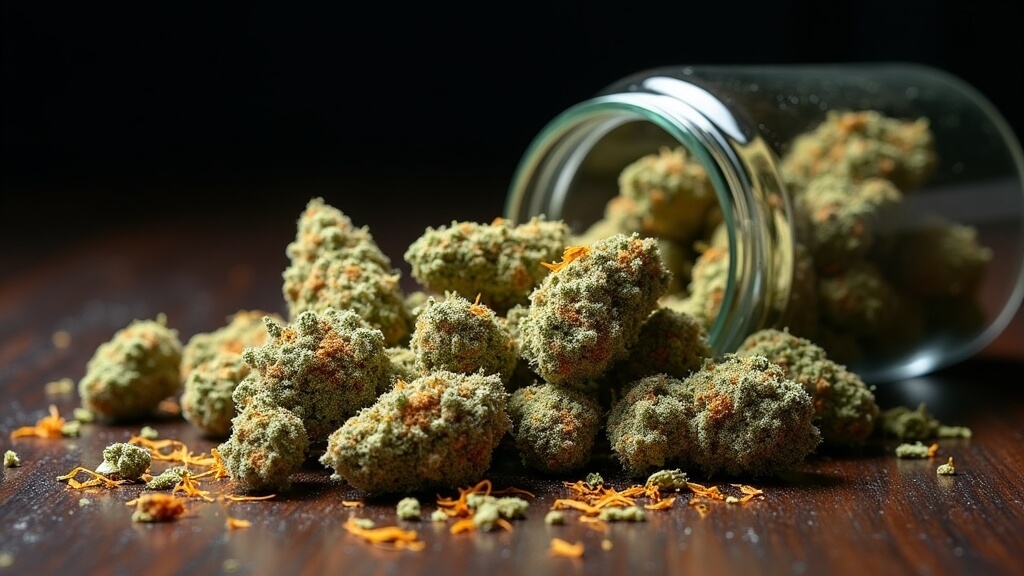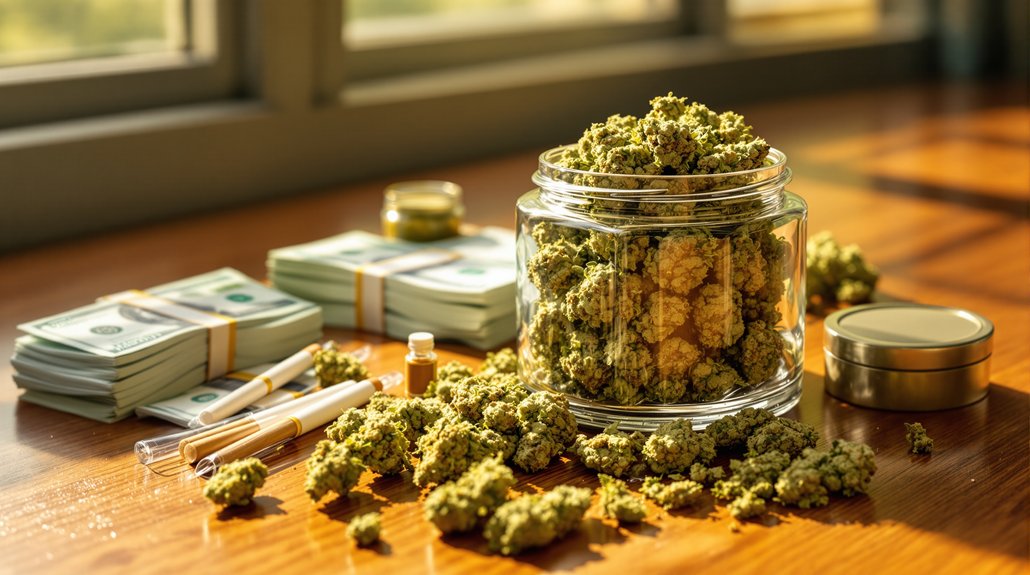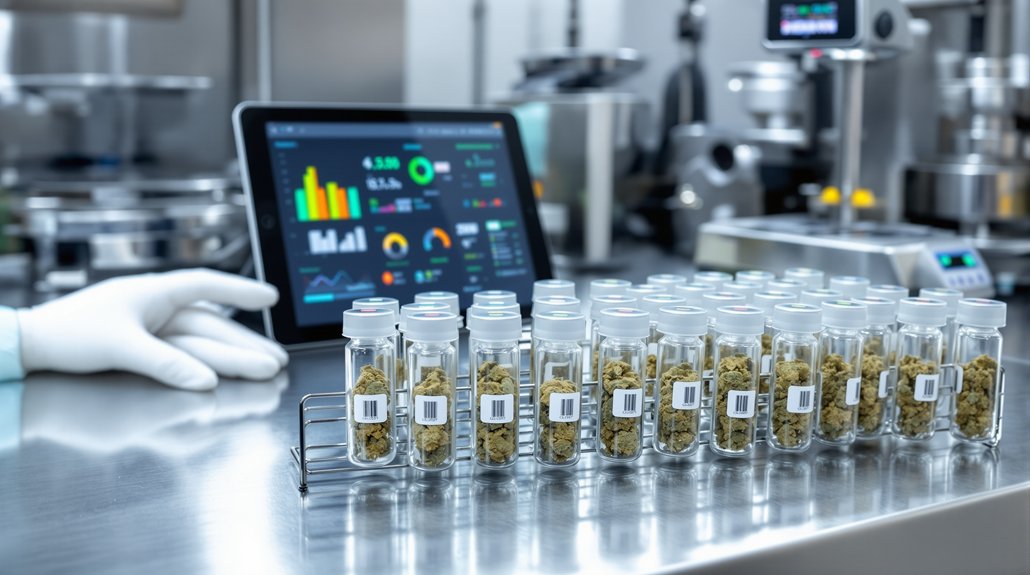The U.S. cannabis industry faces a dramatic price correction as oversupply crashes wholesale costs across mature markets while regional disparities create stark pricing gaps between states.
Major cannabis-producing states like California and Oregon have experienced steep wholesale price declines due to massive overproduction. Outdoor flower in California has plummeted from historical highs to approximately $300 per pound, while Oregon prices have crashed as low as $100 per pound. Oregon currently holds roughly 3 million pounds of unsold cannabis and 75,000 pounds of concentrates in storage, illustrating the severity of market saturation.
Oregon’s staggering 3 million pounds of unsold cannabis inventory starkly illustrates how overproduction has devastated wholesale markets across major producing states.
This supply glut stems largely from aggressive production increases during the pandemic boom period, when operators expanded capacity expecting continued high demand and prices. However, mature markets reached saturation points much faster than anticipated, creating enormous surpluses that continue depressing wholesale rates. Interstate commerce restrictions prevent excess inventory from moving to higher-demand states, trapping surplus product in oversupplied regions. Countries like Colombia offer potential competitive advantages with cultivation costs as low as $0.06 per gram compared to North American production expenses.
Regional price disparities reveal the fragmented nature of state-by-state cannabis markets. New Jersey’s wholesale prices reached $2,598 per pound in May 2025, while California averaged approximately $4,142 per pound wholesale during the same period. At the retail level, Michigan’s prices fell to $83.71 per ounce compared to Illinois at $257.22 per ounce, representing a 207% difference between neighboring states. Indoor flower continues to command premium pricing in most markets despite the overall downward trend. In New York, this trend has accelerated as dispensary expansion drove flower prices down by 5%, vapes by 15%, and edibles by 14%.
These dramatic variations reflect different market maturity levels, regulatory environments, and supply conditions. Newer markets typically maintain higher prices due to limited licensed operators and restricted supply, while established markets face intense competition and oversupply pressures. Pennsylvania exemplifies this downward trajectory, with wholesale prices dropping over 37% from 2024 highs of $1,991 to historic lows in early 2025.
The U.S. Cannabis Spot Index demonstrates ongoing price weakness, increasing only 2.5% to $945 per pound in January 2025 while remaining below 2024 benchmarks. Forward contracts suggest market participants expect continued low pricing, with February 2025 contracts at $945 per pound.
Despite falling prices, the legal cannabis market continues expanding rapidly. Industry projections estimate U.S. market value will reach $45.3 billion in 2025, up from $33.6 billion in 2023, with compound annual growth rates of 11-12% through 2030. Global cannabis industry valuations reached $57 billion in 2023, with high-end forecasts projecting $444 billion by 2030.
This paradox of falling prices amid growing demand reflects supply-side economics overwhelming market expansion. While consumer access increases and overall revenue grows, production capacity has outpaced consumption in mature markets, creating deflationary pressures unique to cannabis compared to broader inflationary trends affecting other consumer goods.






